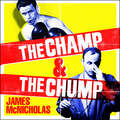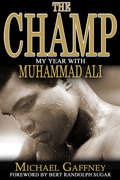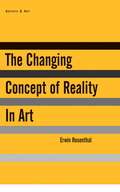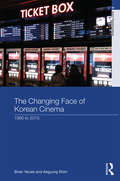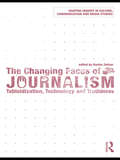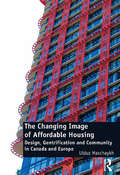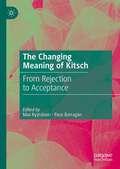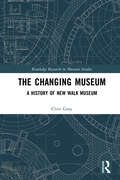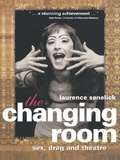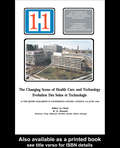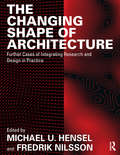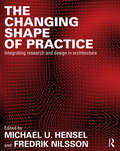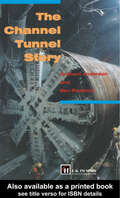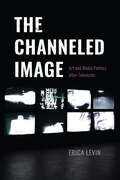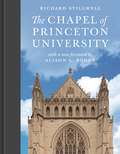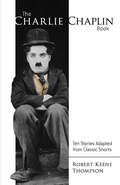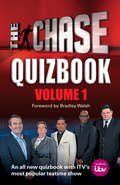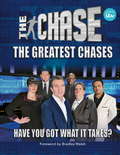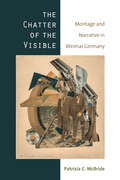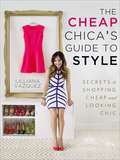- Table View
- List View
The Champ & The Chump: A heart-warming, hilarious true story about fighting and family
by James McNicholasA heart-warming, hilarious true story about fighting and family, based on the acclaimed stage show. For fans of books by Dave Gorman, James Acaster and Danny Wallace, along with boxing tales from the likes of Tyson Fury and Ricky Hatton.The Champ Terry Downes - known as 'The Paddington Express' - was a world champion boxer, US Marine, gangsters' favourite and latter-day film star and businessman. The Chump James McNicholas's PE teacher once told him he was so unfit he'd be dead by the time he was 23. James has spent his life pursuing a career in acting and comedy. In reality, that has meant spells working as a painter-decorator and river cruise salesperson. After Terry's death, James finds himself in reflective mood, comparing how he's doing in life to how his grandad was at that age. What follows is an increasingly colourful journey that takes James from post-war Paddington to the blood-soaked canvases of Baltimore and Whitechapel, via Mayfair parties with the Krays and betting shop bust-ups, as he discovers the truth about his grandfather's extraordinary life. Along the way he begins to dig into his own story, confronting the family addictions that blighted his early years, describing his often-hilarious efforts to make it in the world of showbiz, and attempts to recreate Terry's trials by enlisting in a brutal army boot camp and boxing gym. When James is diagnosed with a frightening and mysterious neurological condition, the two stories of the fighter and the writer suddenly collide, and what began as a nostalgic journey takes on a far more important significance.(P)2021 Headline Publishing Group Limited
The Champ: My Year with Muhammad Ali
by Michael GaffneyThe legendary boxer&’s personal photographer from 1977–1978 shares fascinating stories and stunning rare photographs. Michael Gaffney traveled the world with Muhammad Ali, covered three fights, took eight thousand photographs, and produced hours of recordings that, pieced together in this book, define and reveal an authentic Ali. Poignant, funny, and brutally honest, this book reveals the struggles of the legendary fighter who fought to stay in the game he loved. This is a dramatic and up-close look at the trilogy of Ali&’s fights from 1977–1978: A tough win against Earnie Shavers, a shocking loss to Leon Spinks, and a glorious redemptive comeback victory to win the World Heavyweight Championship for an unprecedented third time, a feat never accomplished before or since. Filled with dramatic photos, The Champ is also a compelling personal journey inside the good heart and courageous spirit of one of the most extraordinary people of our lifetime. &“The Champ is one helluva achievement and one helluva book.&” —Bert Randolph Sugar, Hall of Fame boxing historian
The Changing Concept of Reality in Art (Artists And Art Ser.)
by Deborah Rosenthal Erwin Rosenthal"The transmutation of artistic form," writes Erwin Rosenthal, "depends on individual decisions and cultural development. But there are basic laws of self-expression which do not change, which are perpetual because they accord with the structure of the human mind and soul." These penetrating studies explore the deep psychological and formal affinities between defining figures of their epochs--from Giotto and Dante through Picasso--and illuminate ways that artists and thinkers encounter the world and translate it through the unique language of imagination.The principal sections of this important book are:·Giotto and Dante·Picasso, Painter and Engraver·Giotto and Picasso·The Condition of Modern Art and Thought
The Changing Face of Korean Cinema: 1960 to 2015 (Asia's Transformations)
by Brian Yecies Aegyung ShimThe rapid development of Korean cinema during the decades of the 1960s and 2000s reveals a dynamic cinematic history which runs parallel to the nation’s political, social, economic and cultural transformation during these formative periods. This book examines the ways in which South Korean cinema has undergone a transformation from an antiquated local industry in the 1960s into a thriving international cinema in the 21st century. It investigates the circumstances that allowed these two eras to emerge as creative watersheds, and demonstrates the forces behind Korea’s positioning of itself as an important contributor to regional and global culture, and especially its interplay with Japan, Greater China, and the United States. Beginning with an explanation of the understudied operations of the film industry during its 1960s take-off, it then offers insight into the challenges that producers, directors, and policy makers faced in the 1970s and 1980s during the most volatile part of Park Chung-hee’s authoritarian rule and the subsequent Chun Doo-hwan military government. It moves on to explore the film industry’s professionalization in the 1990s and subsequent international expansion in the 2000s. In doing so, it explores the nexus and tensions between film policy, producing, directing, genre, and the internationalization of Korean cinema over half a century. By highlighting the recent transnational turn in national cinemas, this book underscores the impact of developments pioneered by Korean cinema on the transformation of ‘Planet Hallyuwood’. It will be of particular interest to students and scholars of Korean Studies and Film Studies.
The Changing Faces of Journalism: Tabloidization, Technology and Truthiness (Shaping Inquiry in Culture, Communication and Media Studies)
by Barbie ZelizerThe collection is introduced with an essay by Barbie Zelizer and organized into three sections: how tabloidization affects the journalistic landscape; how technology changes what we think we know about journalism; and how ‘truthiness’ tweaks our understanding of the journalistic tradition. Short section introductions contextualise the essays and highlight the issues that they raise, creating a coherent study of journalism today.
The Changing Image of Affordable Housing: Design, Gentrification and Community in Canada and Europe
by Ulduz MaschaykhIllustrated by a range of case studies of affordable housing options in Canada, this book examines the liveability and affordability of twenty-first-century residential architecture. Focussing on the architects’ and communities’ commitment to these housing programmes, as well as that of the private building sector, it stresses the importance of the context of the neighbourhoods in which they are placed, which are either in the process of urban transition or already gentrified. In doing so, the book shows how, and to what extent, twenty-first-century dwelling architecture developments can help to create an integrated sense of community, diminish social and demographic exclusions in a neighbourhood and incorporate people’s desires as to what their buildings should look like. This book shows that there are significant architectural projects that help to meet the needs and desires of low- to middle-income households as well as homeowners, and that gentrification does not necessarily lead to the displacement of low-income families and singles if housing policies such as those highlighted in this book are put into place. Moreover, the migration of the middle class can result in a healthy mix of classes out of which everyone can enjoy a peaceful and habitable coexistence.
The Changing Meaning of Kitsch: From Rejection to Acceptance
by Max Ryynänen Paco BarragánThis book inaugurates a new phase in kitsch studies. Kitsch, an aesthetic slur of the 19th and the 20th century, is increasingly considered a positive term and at the heart of today’s society. Eleven distinguished authors from philosophy, cultural studies and the arts discuss a wide range of topics including beauty, fashion, kitsch in the context of mourning, bio-art, visual arts, architecture and political kitsch. In addition, the editors provide a concise theoretical introduction to the volume and the subject. The role of kitsch in contemporary culture and society is innovatively explored and the volume aims not to condemn but to accept and understand why kitsch has become acceptable today.
The Changing Museum: A History of New Walk Museum (Routledge Research in Museum Studies)
by Clive GrayUsing the example of New Walk Museum, Leicester, and its collections, the complexity, multi-causality, and reasons for change in museums are examined and explained. The 170 years history of New Walk provides an original basis and innovative approach to be adopted towards explaining museum change. The book makes use of original interview and archive material to examine how and why social, economic, political, and professional developments affected the work that was undertaken in New Walk. The time-span covered is much longer than is normal for a book on museum history and is longer than for almost all the national museums in the UK, with this allowing for a nuanced understanding of the causes and consequences of museum change over time. The problems and possibilities of undertaking museum history research are also discussed. Detailed examination of the ways in which a variety of societal developments fed into museum change is a key feature of the book. The book is aimed at all those with an interest in understanding how and why change affects museum practice and will be of interest to museum professionals, academics, and students in museum studies, history, politics, and sociology as well to the general museum visitor who would like to discover more about the institutions that they visit.
The Changing Room: Sex, Drag and Theatre (Gender in Performance)
by Laurence SenelickThe answers to these questions - and much, much more - are to be found in The Changing Room , which traces the origins and variations of theatrical cross-dressing through the ages and across cultures. It examines: * tribal rituals and shamanic practices in the Balkans and Chinese-Tibet * the gender-bending elements of Greek and early Christian religion * the homosexual appeal of the boy actor on the traditional stage of China, Japan and England * the origins of the dame comedian, the principal boy, the glamour drag artiste and the male impersonator * artists such as David Bowie, Boy George, Charles Ludlam, Dame Edna Everage, Lily Savage, Candy Darling, Julian Clary and the New York Dolls. Lavishly illustrated with unusual and rare pictures, this is the first ever cross-cultural study of theatrical transvestism. It is a must for anyone interested in cross-dressing, theatre, and gender.
The Changing Scene of Health Care and Technology: Proceedings of the 11th International Congress of Hospital Engineering, June 1990, London, UK
by R. G. KensettThis book provides an excellent opportunity to review developments in health care technology, many facets of which are just as applicable to professionals in the wider field of building services as to those working in health care facilities. This book reflects the adaptation of strategies in health care to economic and demographic change in both developed and developing countries.
The Changing Shape of Architecture: Further Cases of Integrating Research and Design in Practice
by Fredrik Nilsson Michael U. HenselThe discipline of architecture is currently undergoing a significant change as professional practice and academia seem to be transforming one another specifically through succinct research undertakings. This book continues the discussion started in The Changing Shape of Practice – Integrating Research and Design in Architecture on architectural offices’ modes of research and lines of inquiry in architecture and how it reshapes practice. The book aims to contribute to the mapping and discussion on research in architectural practice and its transformational impact and gives input to the discussions on where the architectural profession is heading. In this second volume, various research initiatives and modes in architectural practices are portrayed. The book also includes contributions that broaden the scope and put the developments into larger contexts, and present an overview of developments from different regional perspectives and of various social aspects of architecture. It also relates the developments in practice to educational efforts and to initiatives where the more traditional role of architects is challenged. The contributions include chapters by Walter Unterrainer, Anthony Burke, Renée Cheng and Andrea J. Johnson, and Michael U. Hensel, and on the practices atelier d’architecture autogérée, Helen & Hard, MVRDV and The Why Factory, NADAAA & Nader Tehrani, Nordic – Office of Architecture, Schmidt Hammer Lassen, Skidmore, Owings & Merrill, Void, Sarah Wigglesworth Architects, and Älvstranden Utveckling.
The Changing Shape of Practice: Integrating Research and Design in Architecture
by Fredrik Nilsson Michael U. HenselArchitectural practices worldwide have to deal with increasingly complex design requirements. How do practices acquire the ability to do so? The Changing Shape of Practice provides a handbook of examples for practices that wish to integrate more research into their work and a reference book for students that seek to prepare themselves for the changing shape of practice in architecture. It addresses the increasing integration of research undertaken in architectural practices of different sizes ranging from small to very large practices from the UK, USA, Europe and Asia. The book is organized according to the size of the practices which is significant in that it addresses the different structures and resourcing requirements that are enabled by specific practice sizes, as this determines and constrains the type, scope and modes of research available to a given practice. The practices covered include: Woods BagotPerkins + WillWhiteAECOMUN StudioShop ArchitectsPLP ArchitectureKieran Timberlake3XNONLAZPMLThomas Herzog + PartnersHerreros ArquitectosSpacescapeOCEAN Design Research Association By taking stock of the current shape of practice, the book provides essential information for professional architects who are integrating research into their practice.
The Channel Tunnel Story
by Graham Anderson Ben RoskrowThe Channel Tunnel is a huge construction project, employing over 14,000 people at peak, and costing over 11 billion of private money. It has succeeded in spite of great financial, political and techncial difficulties, and a fundamentally flawed contract. This book tells the story of the project, based on the coverage in Construction News and with
The Channeled Image: Art and Media Politics after Television
by Erica LevinA fascinating look at artistic experiments with televisual forms. Following the integration of television into the fabric of American life in the 1950s, experimental artists of the 1960s began to appropriate this novel medium toward new aesthetic and political ends. As Erica Levin details in The Channeled Image, groundbreaking artists like Carolee Schneemann, Bruce Conner, Stan VanDerBeek, and Aldo Tambellini developed a new formal language that foregrounded television’s mediation of a social order defined by the interests of the state, capital, and cultural elites. The resulting works introduced immersive projection environments, live screening events, videographic distortion, and televised happenings, among other forms. For Levin, “the channeled image” names a constellation of practices that mimic, simulate, or disrupt the appearance of televised images. This formal experimentation influenced new modes of installation, which took shape as multi-channel displays and mobile or split-screen projections, or in some cases, experimental work produced for broadcast. Above all, this book asks how artistic experimentation with televisual forms was shaped by events that challenged television broadcasters’ claims to authority, events that set the stage for struggles over how access to the airwaves would be negotiated in the future.
The Channeled Image: Art and Media Politics after Television
by Erica LevinA fascinating look at artistic experiments with televisual forms. Following the integration of television into the fabric of American life in the 1950s, experimental artists of the 1960s began to appropriate this novel medium toward new aesthetic and political ends. As Erica Levin details in The Channeled Image, groundbreaking artists like Carolee Schneemann, Bruce Conner, Stan VanDerBeek, and Aldo Tambellini developed a new formal language that foregrounded television’s mediation of a social order defined by the interests of the state, capital, and cultural elites. The resulting works introduced immersive projection environments, live screening events, videographic distortion, and televised happenings, among other forms. For Levin, “the channeled image” names a constellation of practices that mimic, simulate, or disrupt the appearance of televised images. This formal experimentation influenced new modes of installation, which took shape as multi-channel displays and mobile or split-screen projections, or in some cases, experimental work produced for broadcast. Above all, this book asks how artistic experimentation with televisual forms was shaped by events that challenged television broadcasters’ claims to authority, events that set the stage for struggles over how access to the airwaves would be negotiated in the future.
The Channeled Image: Art and Media Politics after Television
by Erica LevinA fascinating look at artistic experiments with televisual forms. Following the integration of television into the fabric of American life in the 1950s, experimental artists of the 1960s began to appropriate this novel medium toward new aesthetic and political ends. As Erica Levin details in The Channeled Image, groundbreaking artists like Carolee Schneemann, Bruce Conner, Stan VanDerBeek, and Aldo Tambellini developed a new formal language that foregrounded television’s mediation of a social order defined by the interests of the state, capital, and cultural elites. The resulting works introduced immersive projection environments, live screening events, videographic distortion, and televised happenings, among other forms. For Levin, “the channeled image” names a constellation of practices that mimic, simulate, or disrupt the appearance of televised images. This formal experimentation influenced new modes of installation, which took shape as multi-channel displays and mobile or split-screen projections, or in some cases, experimental work produced for broadcast. Above all, this book asks how artistic experimentation with televisual forms was shaped by events that challenged television broadcasters’ claims to authority, events that set the stage for struggles over how access to the airwaves would be negotiated in the future.
The Chapel of Princeton University
by Richard StillwellThe classic guide to one of America's architectural treasures—now with magnificent new color photos and a foreword by Princeton's dean of religious lifeLike the medieval English cathedrals that inspired it, the Princeton University Chapel is an architectural achievement designed to evoke wonder, awe, and reflection. Richard Stillwell's The Chapel of Princeton University is the essential illustrated guide to this magnificent architectural and cultural landmark.Now with new color photos throughout, The Chapel of Princeton University traces the history of the chapel and describes its architecture, sculpture, woodwork, and furnishings. Stillwell knew the building from its planning stages through its construction, dedication, and long use. In this book, he offers unique insights into the vision of architect Ralph Adams Cram and the artistry of Charles J. Connick, who designed the chapel's breathtaking cycle of stained-glass windows. Stillwell's thoroughly researched account of the glorious stone, wood, and glasswork gives readers and visitors an opportunity to enjoy the chapel as both an aesthetically beautiful structure and a moving religious statement. Stillwell reveals how the building's composition is meant to provide spiritual access to as many seekers as possible and instill in them an extraordinary message of hope.Featuring a foreword by Alison Boden, Princeton's dean of religious life, The Chapel of Princeton University is a guided tour of an inspiring structure that has served as the spiritual home to one of America's leading universities.
The Charlie Chaplin Book: Ten Stories Adapted from Classic Shorts
by Robert Keene ThompsonBeloved around the world for his Little Tramp character, Charlie Chaplin was the most famous person on the planet during the early twentieth century, and his popularity endures to this day. Cinephiles and Chaplin aficionados will rejoice in these expert novelizations by a famed Hollywood screenwriter of the scripts for ten short films Chaplin made in 1915 for the Essanay Company of Chicago. The Bank: A bank janitor develops romantic designs on a secretaryA Woman: An eager suitor cross-dresses to deceive a disapproving father Work: A paperhanger's assistant wreaks havoc on a stately mansionThe Champion: A pet bulldog helps his master go for broke in the boxing ring His New Job: A prop man at a movie studio is given a chance to actBy the Sea: A bathing resort provides the backdrop for a series of comic adventuresA Night Out: A pair of friends go on a bender, spreading pandemonium in their pathThe Tramp: An admirer of a farmer's daughter is thwarted by a rivalIn the Park: A couple of star-crossed lovers receive help from a kindly CupidA Jitney Elopement: A Romeo rescues his sweetheart from an arranged marriage
The Charrette Handbook: The Essential Guide To Design-based Public Involvement
by Bill Lennertz Aarin LutzenhiserThe Charrette Handbook is a step-by-step guide to successful charrettes -- those extended exercises that help citizens envision new possibilities for their communities. Based on a program developed by the National Charrette Institute, the book offers a three-phase approach to project management, describing how to organize for a charrette, how to conduct one, and how to put the resulting ideas into effect. The section on preparation has been extensively overhauled for this edition.
The Chase Quizbook Volume 1: The Chase is on!
by ITV Ventures LimitedContaining 2,000 questions from the show and a Foreword from host Bradley Wash, The Chase Quizbook is the ultimate indulgence for fans of ITV's most popular quiz programme.Choose from 40 quizzes and pit your wits against The Governess, The Beast, The Sinnerman and The Barrister and see if you can 'out quiz' the show's stars. With questions taken from the show, can you answer those that the Chasers couldn't? Cash builder, head-to-head and the final chase segments of the show are faithfully recreated and there's even a chase grid on the reverse of this jacket for you to track your game. Play with family, friends or make it a personal challenge and see whether you've got what it takes to outrun The Chaser.
The Chase Quizbook Volume 1: The Chase is on! (Chase)
by ITV Ventures LimitedContaining 2,000 questions from the show and a Foreword from host Bradley Wash, The Chase Quizbook is the ultimate indulgence for fans of ITV's most popular quiz programme.Choose from 40 quizzes and pit your wits against The Governess, The Beast, The Sinnerman and The Barrister and see if you can 'out quiz' the show's stars. With questions taken from the show, can you answer those that the Chasers couldn't? Cash builder, head-to-head and the final chase segments of the show are faithfully recreated and there's even a chase grid on the reverse of this jacket for you to track your game. Play with family, friends or make it a personal challenge and see whether you've got what it takes to outrun The Chaser.
The Chase: The Greatest Chases
by ITV Ventures LimitedWith a brand new format and new questions from the show, this official The Chase quizbook is the ultimate indulgence for fans of ITV's most popular quiz programme. Containing 50 of the most difficult chases where contestants actually beat the Chaser, this book challenges you to do the same and defeat one of the show's stars: The Governess, The Beast, The Sinnerman, The Barrister and The Vixen. Have you got what it takes to beat them at their own game, and answer the questions that they couldn't?With over 3,500 tough questions to test yourself against, this is the ultimate challenge for viewers who reckon they could take on a Chaser... and win.
The Chase: The Greatest Chases (Chase)
by ITV Ventures LimitedWith a brand new format and new questions from the show, this official The Chase quizbook is the ultimate indulgence for fans of ITV's most popular quiz programme. Containing 50 of the most difficult chases where contestants actually beat the Chaser, this book challenges you to do the same and defeat one of the show's stars: The Governess, The Beast, The Sinnerman, The Barrister and The Vixen. Have you got what it takes to beat them at their own game, and answer the questions that they couldn't?With over 3,500 tough questions to test yourself against, this is the ultimate challenge for viewers who reckon they could take on a Chaser... and win.
The Chatter of the Visible: Montage and Narrative in Weimar Germany
by Patrizia C. McbrideThe Chatter of the Visible examines the paradoxical narrative features of the photomontage aesthetics of artists associated with Dada, Constructivism, and the New Objectivity. While montage strategies have commonly been associated with the purposeful interruption of and challenge to narrative consistency and continuity, McBride offers a historicized reappraisal of 1920s and 1930s German photomontage work to show that its peculiar mimicry was less a rejection of narrative and more an extension or permutation of it-a means for thinking in narrative textures exceeding constraints imposed by "flat" print media (especially the novel and other literary genres). McBride's contribution to the conversation around Weimar-era montage is in her situation of the form of the work as a discursive practice in its own right, which affords humans a new way to negotiate temporality; as a particular mode of thinking that productively relates the particular to the universal; or as a culturally specific form of cognition. Book jacket.
The Cheap Chica's Guide to Style
by Lilliana Vazquez Jessica JonesPriceless tips and tricks to shopping on a budget, from America’s favorite frugal fashionista Stylish bargain-hunters have been flocking to Lilliana Vazquez’s CheapChicas. com since 2008 for tips and tricks on how to shop smart, copy their favorite designer looks, and dress chic for less. Now a go-to destination for women eager for affordable fashion, the site has established Lilliana as a nationally recognized style expert. Now, in The Cheap Chica’s Guide to Style, Lilliana is spilling her secrets! Fun quizzes will help readers define their style and budget. And Lilliana lays out the best places-from stores to flash-sale sites to their own closets- to score stylish deals. Approachable and beautifully designed, The Cheap Chica’s Guide to Style is the must-have accessory for 2013 and beyond. .
